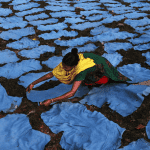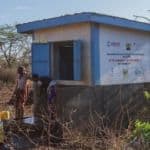Weekly Roundup: Preventing Zika, Improving Microfinance and Percolating Progress
Zika Vaccine’s Coming (For Sure)
Reuters this week made it clear why there will be a vaccine for Zika sooner rather than later: There’s big money at stake.
The mosquito-borne virus can cause horrible birth defects and billions of people in the Global South are at risk of contracting it. But drugmakers scrambling to find a vaccine, including Sanofi, GlaxoSmithKline and Takeda, have their eyes on a different market: the millions of travelers from wealthy nations who will want to get vaccinated before visiting Zika-prone areas. “If you consider just a portion of the U.S. traveler population, we can conservatively envision a Zika market opportunity exceeding $1 billion” a year, said Joseph Kim, chief executive of Inovio Pharmaceuticals.
It’s not too early to start thinking of creative differential pricing strategies that would help poor people afford Zika vaccine. And is it a pipe dream to think that a pharmaceutical company – perhaps in pursuit of a public relations boost – would use Zika vaccine sales to help fund solutions to other tropical diseases, such as malaria, for which efforts to find a vaccine have heretofore been purely philanthropic?
Making Microfinance Work
Microfinance has lost a good bit of its allure in recent years, as multiple studies have questioned its effectiveness as an anti-poverty tool. Perhaps the most influential of these were the multiple randomized evaluations summarized in a 2015 paper, analyzing the impact of microcredit products from around the world. The studies showed that these products didn’t increase the average incomes or consumption of households, and rarely led to increased business profits.
But now Dean Karlan and Jonathan Zinman, two of the researchers behind that paper, have co-written a new working paper with other prominent researchers, exploring how the sector can turn things around. “Traditional microcredit hasn’t lived up to expectations, but we are learning how to improve it,” Karlan et al put it in a Harvard Business Review article summarizing the findings. “While meeting this challenge is a clear priority for policy makers and donors, it is also a major profit opportunity for commercial players who can solve market failures and create real value.”
Percolating Progress
East Africa has come a long way in the past decade when it comes to coffee production, increasing its output of high-quality coffee by 25 percent. One factor in that boost is the nearly 10-year-old Coffee Initiative, which is funded by the Bill & Melinda Gates Foundation and implemented by nonprofit TechnoServe. This week TechnoServe shared a detailed update on the initiative’s progress toward training farmers on better agrarian practices and establishing more coffee industry infrastructure and investment. According to the report, the initiative has:
- Improved farmers’ average coffee incomes by 27 percent
- Trained nearly 140,000 coffee farmers in Ethiopia, Kenya, Rwanda and Tanzania in good agricultural practices, resulting in average yield increases of 38 percent (and growing)
- Helped farmer groups establish 195 new wet mills and improve operations at 145 additional wet mills
- Helped farmers connect with banks, exporters and other market actors to access more than $21 million of financing and earn an average price increase of $1.54 for each kilogram of coffee sold
There’s a lot more progress to be made. As the report points out, more than half of the world’s coffee farmers live in Africa, which represents just 10 percent of global coffee production.
Poverty vs. Children
Almost 385 million children worldwide survive on less than $1.90 a day, and nearly half of all children in sub-Saharan Africa are living in extreme poverty. Children are also twice as likely as adults to be living below the poverty line. Those were some headline figures from a sobering report from the World Bank and UNICEF released this week. These numbers – based on data from 89 countries that represent 83 percent of the developing world’s population – show how challenging it will be to meet the UN’s Sustainable Development Goal of ending extreme poverty by 2030. And the situation might be even worse than it sounds. As UNICEF Executive Director Anthony Lake put it: “Children are not only more likely to be living in extreme poverty; the effects of poverty are most damaging to children … because the deprivations they suffer affect the development of their bodies and their minds. … This not only limits their futures, it drags down their societies.”
smarter Outsourcing in Senegal
Want to improve patient care in emerging markets? Maybe governments should consider outsourcing some of the supply chain logistics stuff. The government in Senegal put the idea to the test by contracting out last-mile deliveries to third-party providers – instead of paying public health workers to perform the same tasks. An article in the September issue of Global Health: Science and Practice explores the benefits of the project. Researchers found that in the first six months of the three-year program, clinics with inventory shortages for health commodities such as contraceptives and implants dropped from more than 80 percent to less than 2 percent. Doctors and nurses, the research showed, were able to focus more on patients.
Merck & Co. Inc., through its Merck for Mothers initiative, has been funding Senegal’s supply chain reform efforts, along with the Bill & Melinda Gates Foundation. More information on the study and its findings can be found here.
Financial Inclusion Data Dump
An estimated 1.1 billion women are excluded from the formal financial system – 55 percent of the total unbanked population. “A Buck Short,” a new report from BFA (Bankable Frontiers Associates), sponsored by Omidyar Network, explores why this is the case, and what can be done about it. Using the Financial Diaries methodology to generate “deep engagements with low-income, economically active women” in India, Kenya and Mexico, it examines these women’s financial behavior, showing how their behavior differs from men’s – and how financial services providers can better serve them.
The International Monetary Fund released some data of its own this week, sharing the results of its seventh annual Financial Access Survey. This (free) database provides insights on “the availability and use of financial products such as deposit accounts, loans and insurance policies by individuals and firms across the globe.” It includes data from traditional financial service providers like commercial banks, microfinance institutions or other deposit-taking institutions, and providers of digital financial services such as mobile money.
Quotable
“We can’t copy and paste the grant-making and venture capital funding of Boston and Silicon Valley into other places. We need to (define) a flow of ideas at the top, then empower enough people to find solutions.”
Inventor and MIT professor Ramesh Raskar, who is developing a series of hubs for young innovators to work on emerging-market problems, as quoted in FastCoexist.
Are You Really a Social Entrepreneur? Take The Test.
Shawn Carraher, a professor at the University of Texas-Dallas, was helping a student work on a research project when they discovered there was no tool to measure social entrepreneurship. So Carraher invented one.
It’s hard enough to define “social entrepreneur” these days (Google it if you need proof that opinions vary), much less measure it. Nevertheless, Carraher bravely developed an 11-part scale, including such nebulous concepts as “Relentlessly pursuing new opportunities to serve your mission” and “Engaging in a process of continuous innovation related to your mission.”
We’re sure there’s value in the measurement attempt, we just don’t yet know what it is. A little help?
FICO Goes to India
In a clear sign that the credit scoring industry is evolving to better serve low-income borrowers, FICO, the industry standard credit score in the U.S., announced this week that it will develop a score for consumers in India with limited or no formal credit history. The company will partner with Lenddo, which specializes in credit and verification technologies, to create this score using nontraditional data. As Richard Eldridge, co-founder and chief executive at Lenddo, put it, “We believe that helping qualified low- and middle-income consumers gain access to credit will improve their lives and quite possibly transform Indian society. Defeating the need of a credit history to obtain a loan is essential to bring unserved but qualified consumers into the formal economy and giving them access to mainstream financial institutions.” FICO also recently announced a new type of credit score in the U.S. market, aimed at extending credit to previously unscorable borrowers. Times are changing.
Photo courtesy of NIH Image Gallery.
- Categories
- Uncategorized



